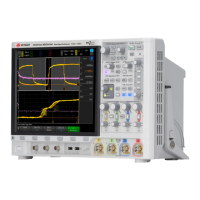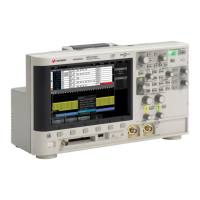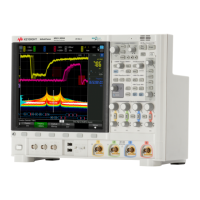1590 Keysight InfiniiVision 4000 X-Series Oscilloscopes Programmer's Guide
42 Synchronizing Acquisitions
Synchronization in the Programming Flow
Most remote programming follows these three general steps:
1 Set up the oscilloscope and device under test (see page 1590).
2 Acquire a waveform (see page 1590).
3 Retrieve results (see page 1590).
Set Up the Oscilloscope
Before making changes to the oscilloscope setup, it is best to make sure it is
stopped using the :STOP command followed by the *OPC? query.
Acquire a Waveform
When acquiring a waveform there are two possible methods used to wait for the
acquisition to complete. These methods are blocking and polling. The table below
details when each method should be chosen and why.
Retrieve Results
Once the acquisition is complete, it is safe to retrieve measurements and statistics.
It is not necessary to use *OPC?, hard coded waits, or status checking when setting up the
oscilloscope. After the oscilloscope is configured, it is ready for an acquisition.
Blocking Wait Polling Wait
Use When You know the oscilloscope will trigger
based on the oscilloscope setup and
device under test.
You know the oscilloscope may or may
not trigger on the oscilloscope setup
and device under test.
Advantages No need for polling.
Fastest method.
Remote interface will not timeout
No need for device clear if no trigger.
Disadvantages Remote interface may timeout.
Device clear only way to get control of
oscilloscope if there is no trigger.
Slower method.
Requires polling loop.
Requires known maximum wait time.
Implementation
Details
See "Blocking Synchronization"
on page 1591.
See "Polling Synchronization
With Timeout" on page 1592.

